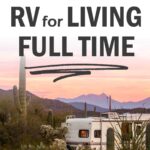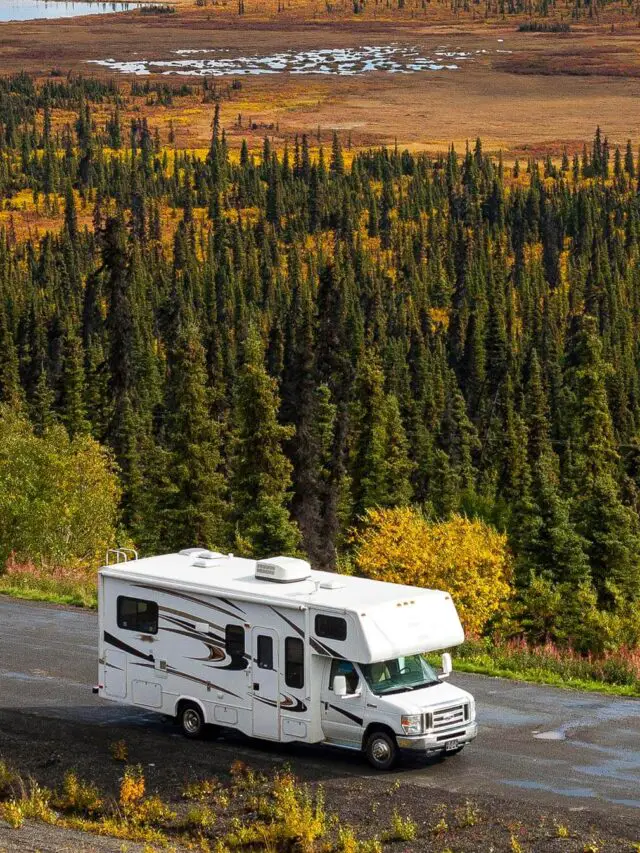How to Choose the Best RV to Live in Full Time
As an Amazon Associate, we earn from qualifying purchases. We also earn from other affiliate websites. See our full disclaimer.
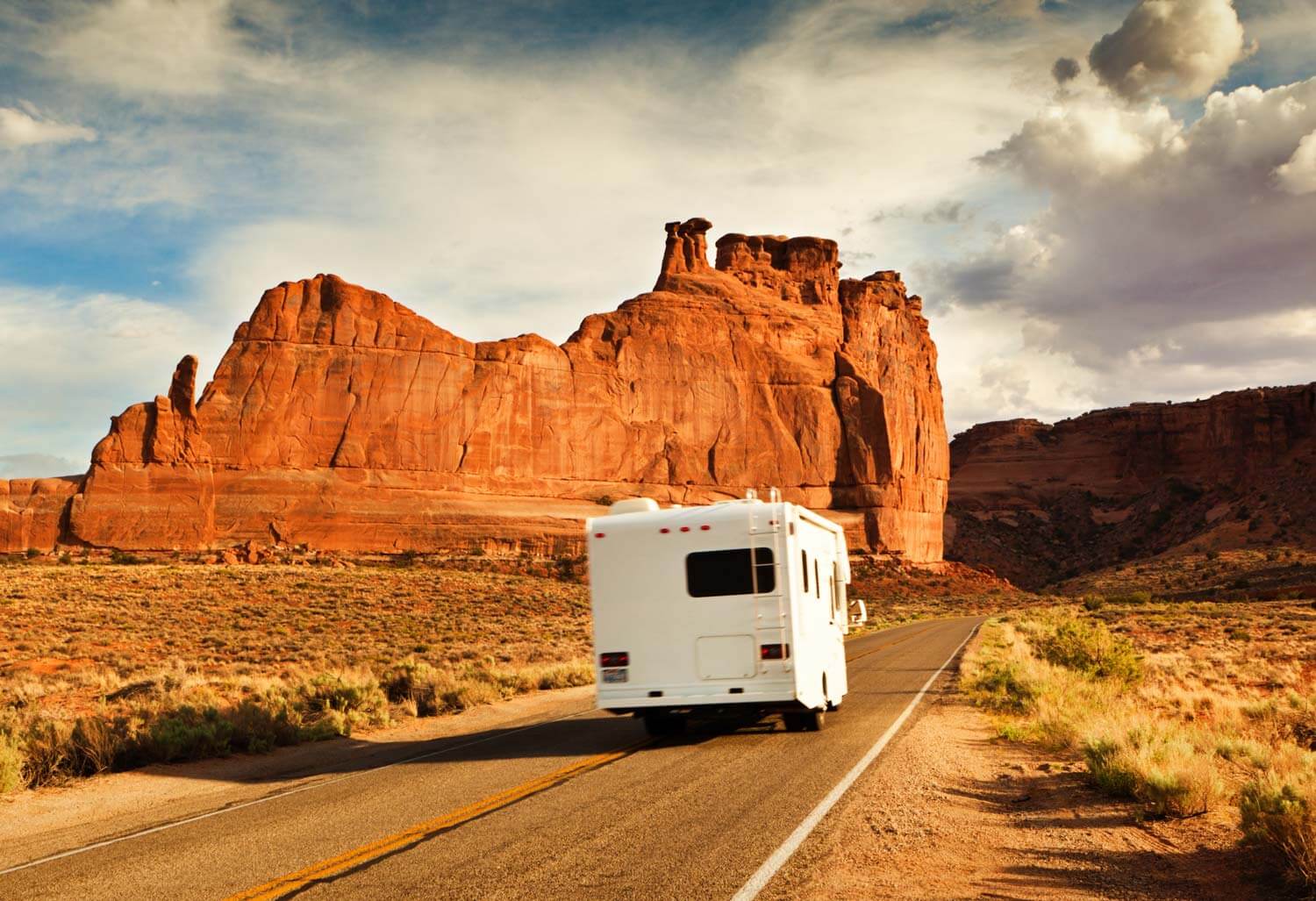
When starting the search for the best RV for full-time living, there are several things to consider. Many of them depend on your unique situation, travel preferences, and priorities for tiny living on the road full-time.
Deciding on an RV will require you to determine what type, size, and features you need. How fast you want to travel (or how far), where you want to stay, and how simple you want to live will impact your RV choice.
Here is what you need to know to choose the best RV to live in full-time.
Types of RVs
There are different types of RVs in today’s market for people with various needs and travel plans. Your travel style and priorities for your small space will help determine what type of RV you choose. Here is a list of popular RV types and the characteristics of each.
Class A RVs
Class A motorhomes look like a bus because they are built on a bus chassis. These recreational vehicles are usually 30+ feet long, although some smaller sizes are on the market.
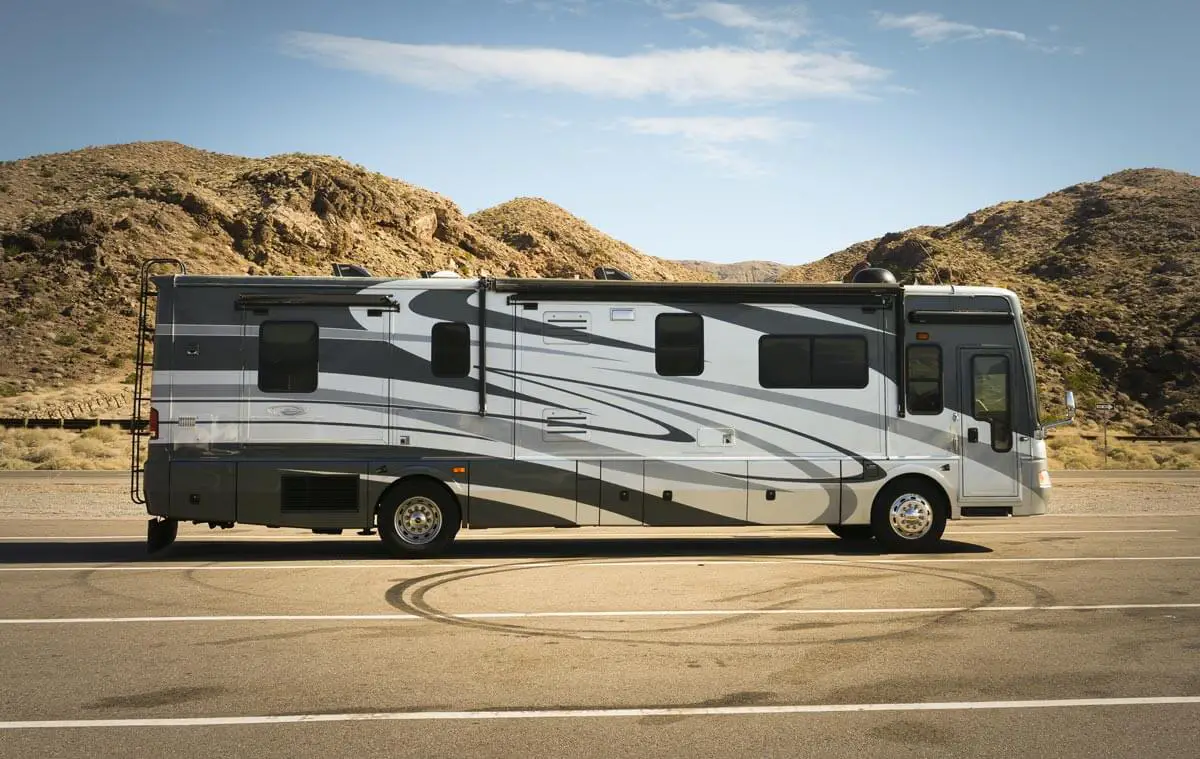
Bigger models will have a diesel engine located at the back of the motorhome. These are known as “diesel pushers.” Class A motorhomes are typically luxury RVs with a higher price point, including many systems and features. In recent years, more affordable gas-powered class As have appeared on the market.
Class B RVs
Class B motorhomes are built on a commercial van chassis (Mercedes-Benz Sprinter, Dodge Promaster, or Ford Transit). It is usually around 18 – 22 feet in length, although you can find longer ones.
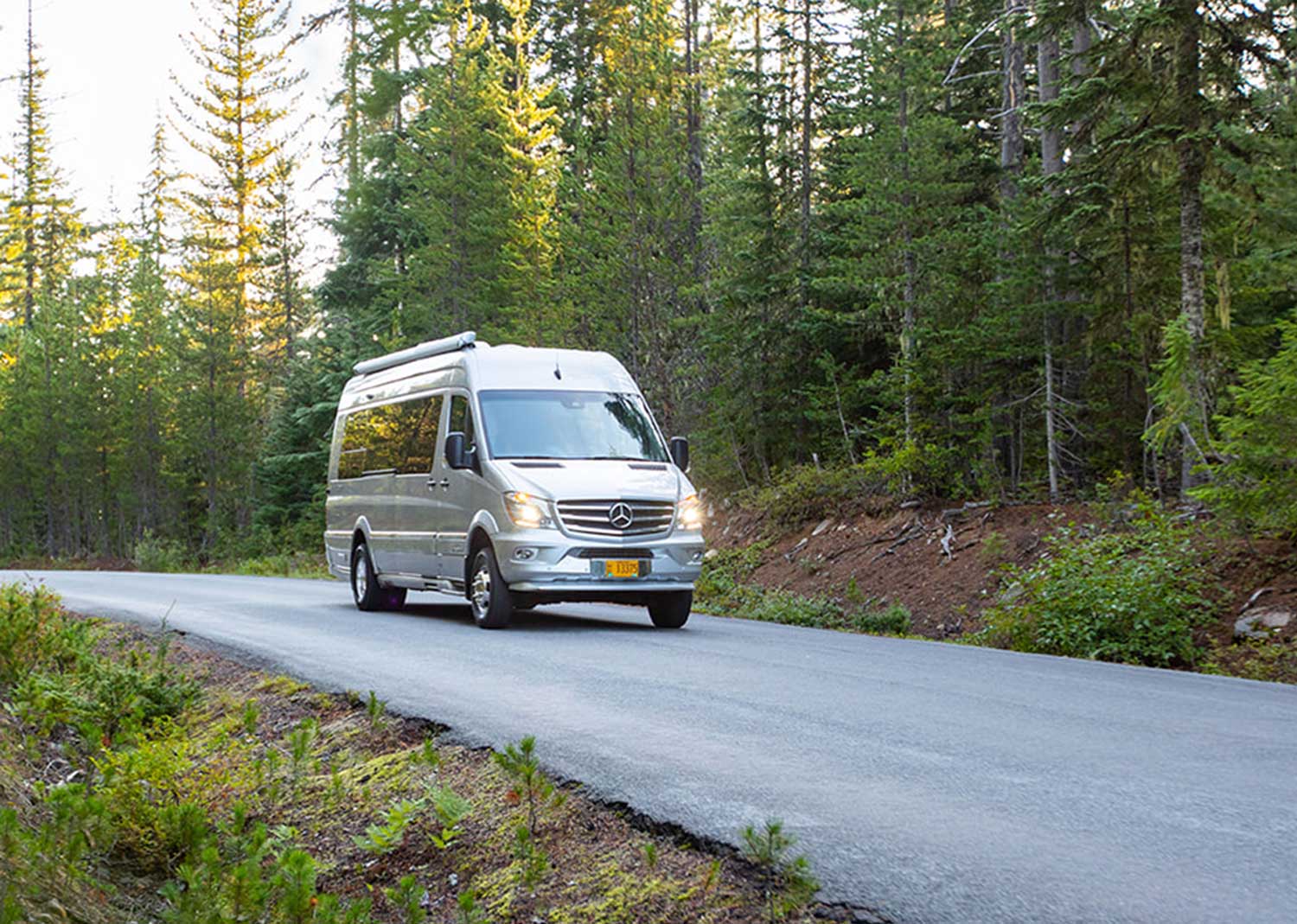
Class B’s can have a gas or diesel engine, and many have optional features of four-wheel drive and off-road packages. Class B RVs tend to get the best fuel mileage due to their compact size. They are ideal for maintaining a small footprint to reach more remote areas.
Class C RVs
The class C motorhome is typically built on a cutaway van chassis and is about 25 – 30 feet in length. Some models are available in 30+ feet. They are typically gas powdered. However, some smaller class C models are diesel.
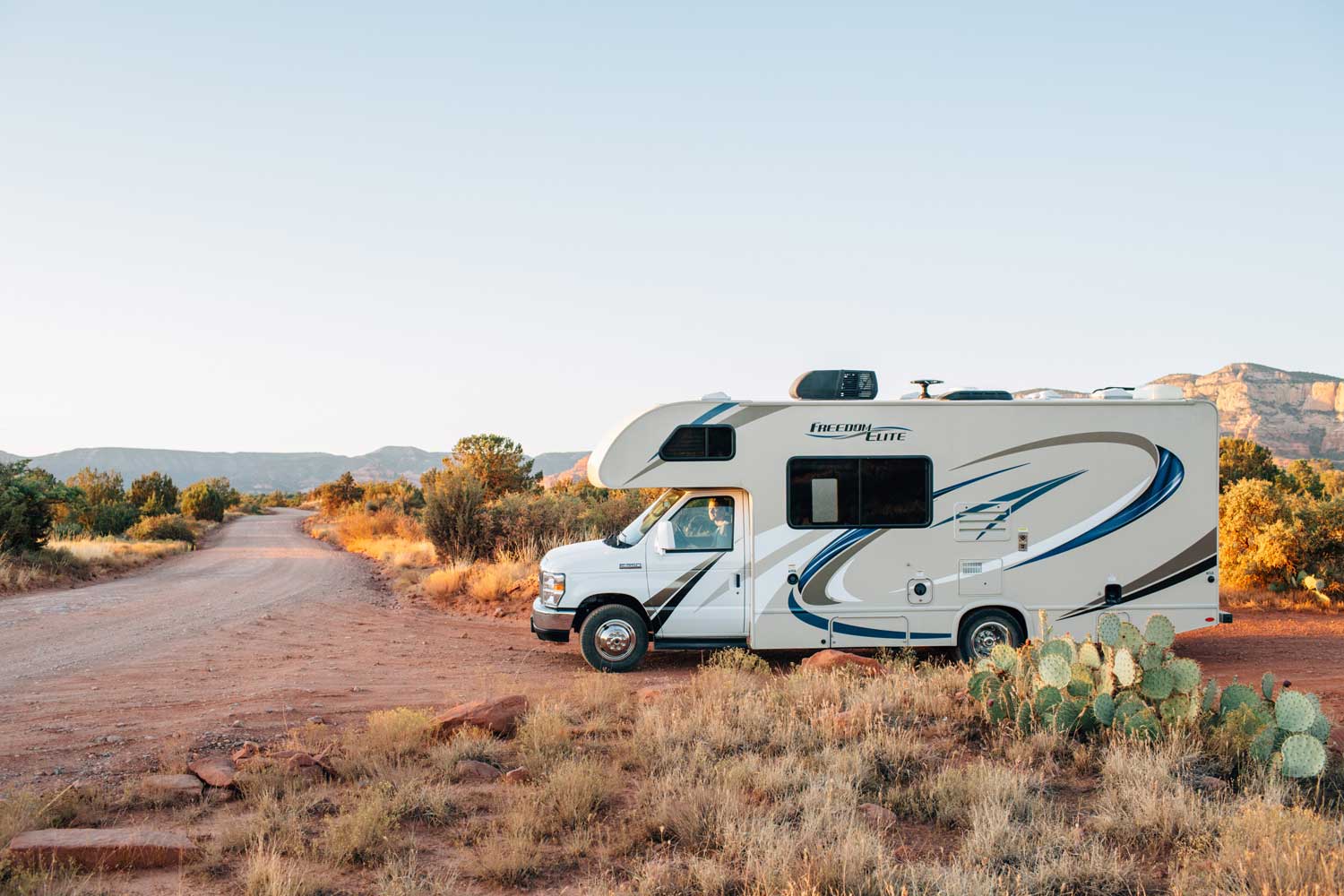
Many models have slide-out features for extra space and over-the-cab storage or sleeping areas. These RVs are great for faster travel since you can set up and tear down quickly. Many are also pretty easy to get around in while still offering a decent amount of living space.
Travel Trailers
Travel trailers are a popular RV choice for many campers. These towable RVs come in various lengths – from less than 20 feet to 35+ feet. They are designed to be towed by an SUV or truck, depending on the size.
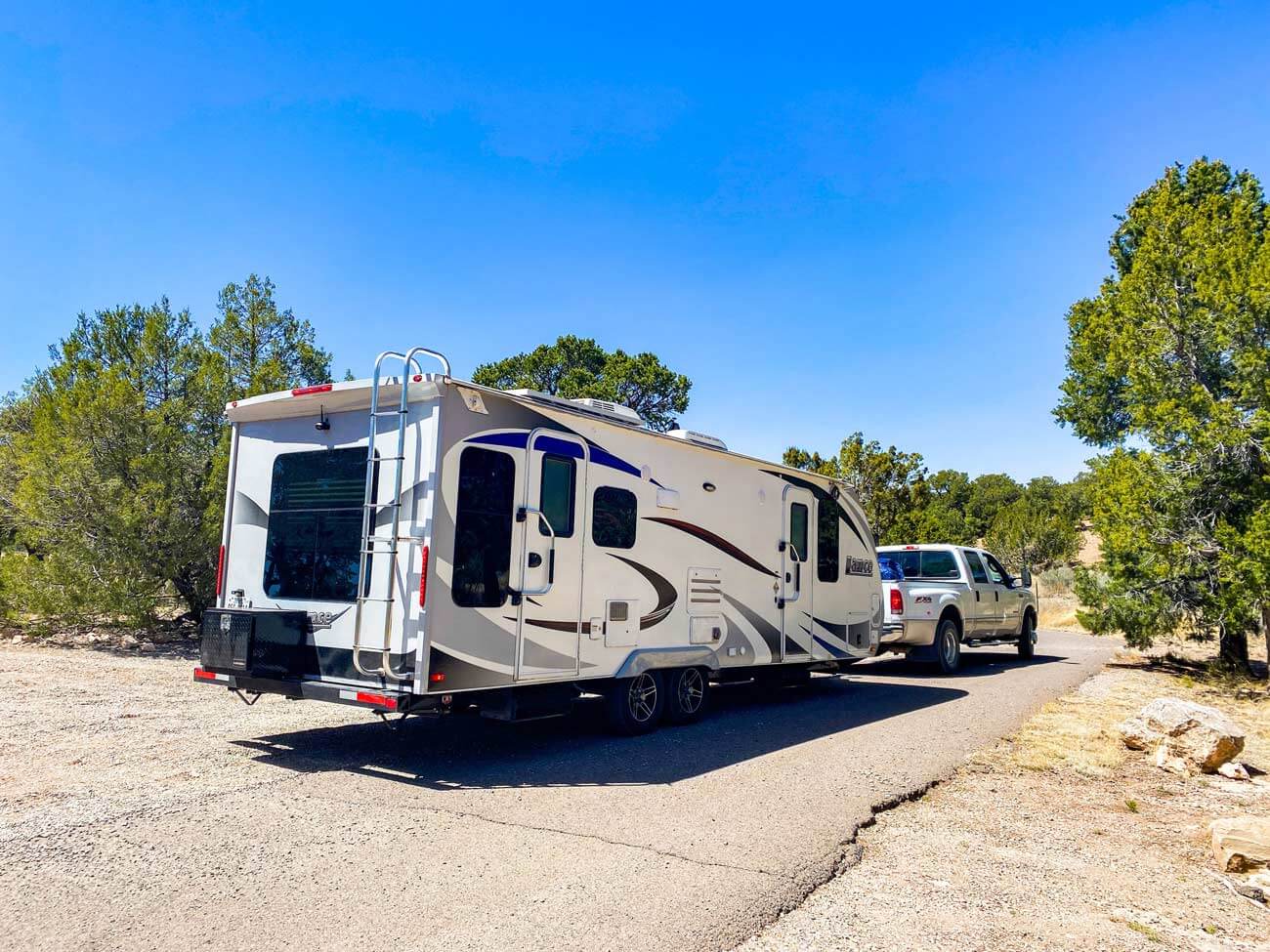
These trailers are an affordable RV option if you already own a truck or other vehicle to tow the trailer. Travel trailers also come with some of the most versatile layouts on the market.
Fifth Wheels
Similar to a travel trailer, fifth wheel RVs are designed to secure to a truck’s bed instead of a tow hitch.
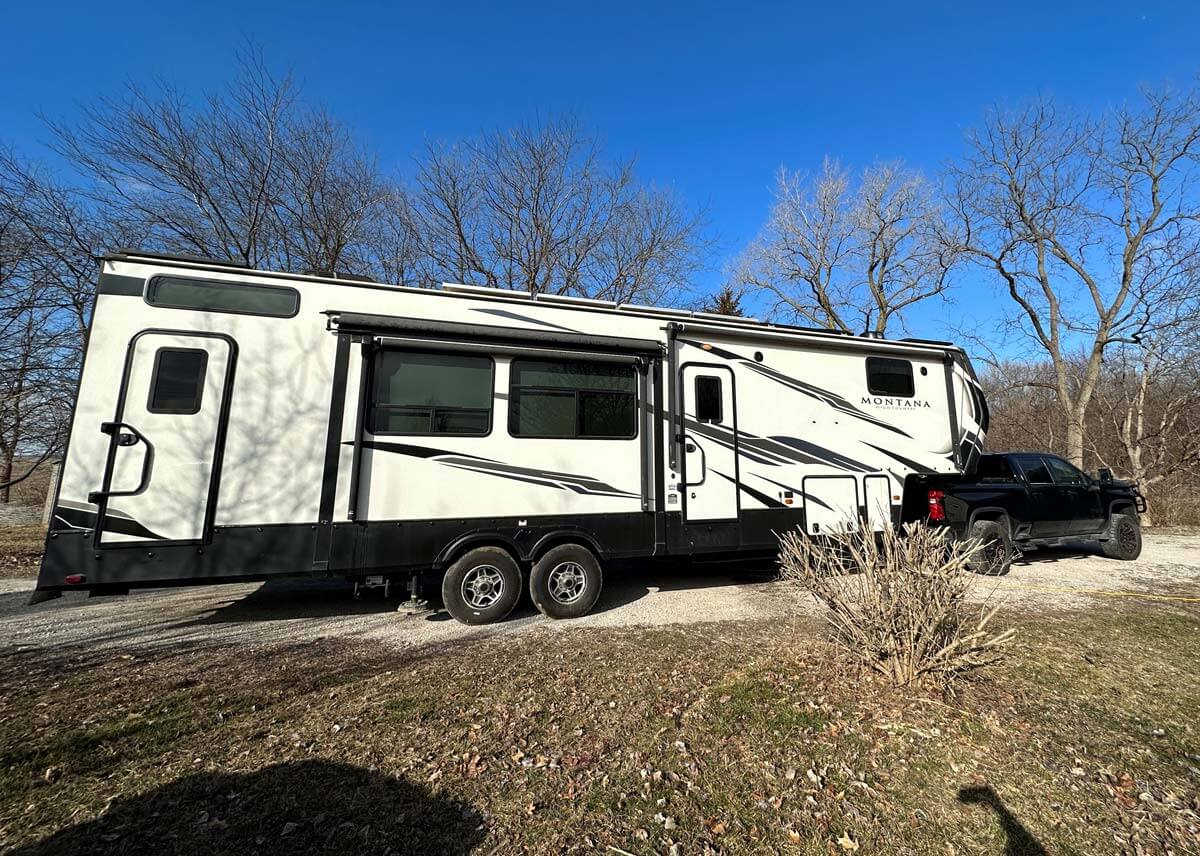
If you decide to consider a large trailer, these can be easier to pull due to the larger turning radius, however, they will require a large pickup truck (typically a 3/4 or 1-ton truck) and a fifth wheel hitch installed in the truck bed. Fifth wheels are some of the most spacious trailers on the market and a great choice for a large family.
Truck Campers
Truck campers are built to sit on top of the bed of the truck. The larger truck campers usually require a 3/4 or 1-ton truck. They are ideal for going off-road on public lands, squeezing into more stealth parking areas, and maintaining a tiny footprint that allows flexibility.
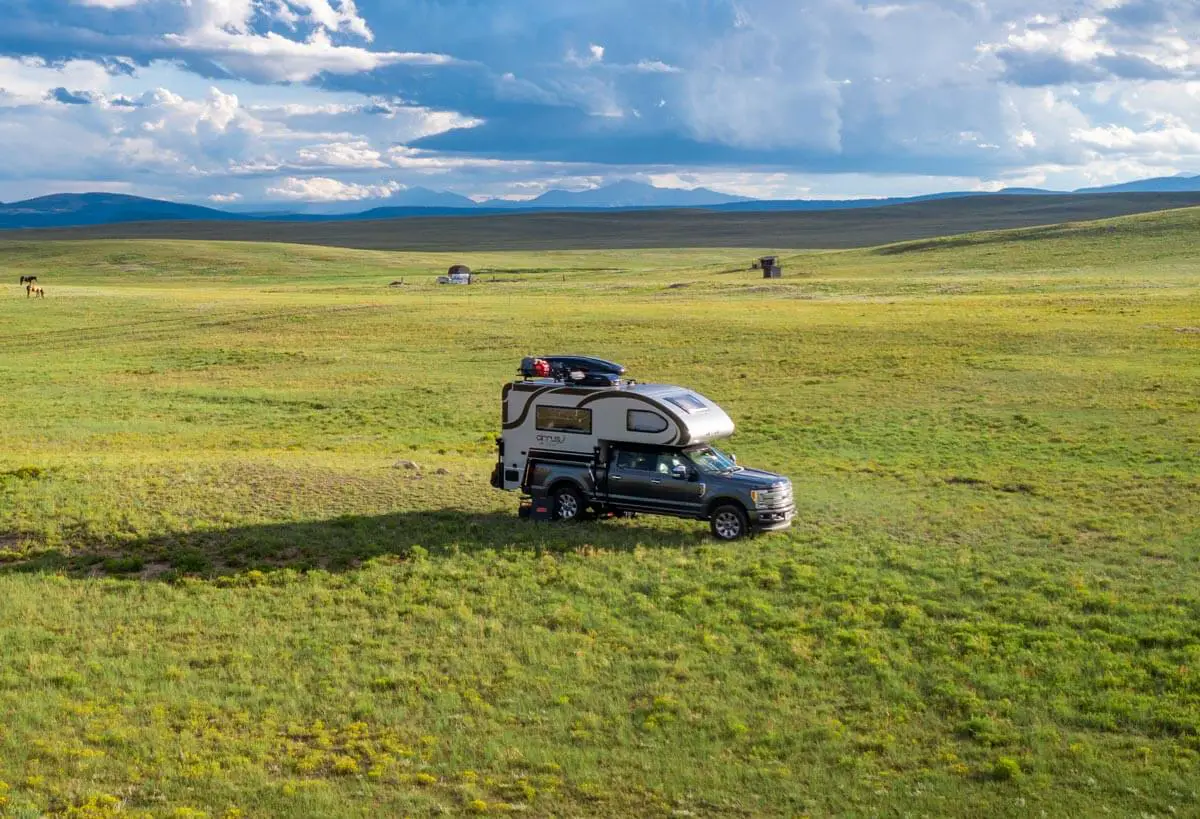
Some truck campers have RV holding tanks that match most travel trailer sizes, a dry bath, and slide-outs to create more space. If you’re looking at a smaller RV option, don’t overlook this unique choice for full-time RV living.
Custom RVs
More customizable recreational vehicles are gaining popularity in the market. These include camper vans, schoolies (school buses), overland vehicles (built for off-road travel), and towable tiny homes.
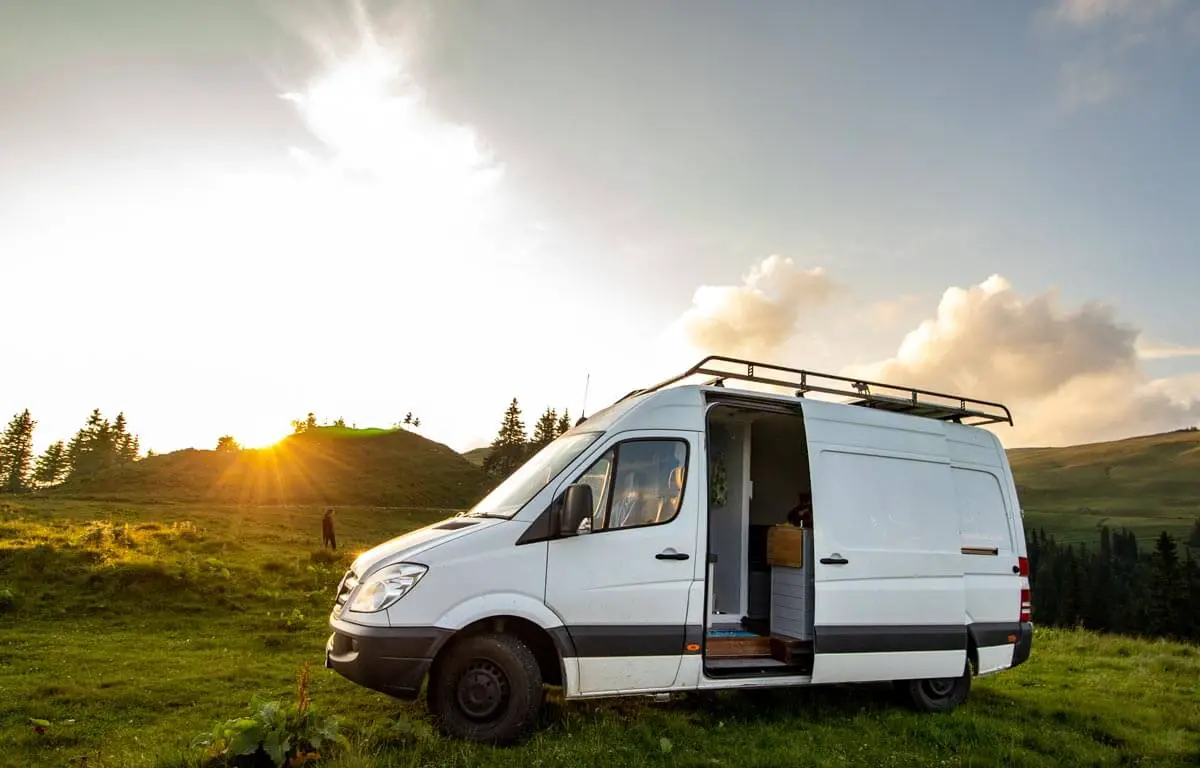
These options might require the purchase of plans to build. You can also DIY your own, or if you want to splurge, you can purchase one from a builder.
Choosing an RV Size
The trick to purchasing the right RV is selecting an option with just the amount of space you need, no more. Many newbie RVers will immediately gravitate toward large RVs without realizing the extra costs of upkeep, driving and backing issues, and time that is involved in operating and maintaining them.
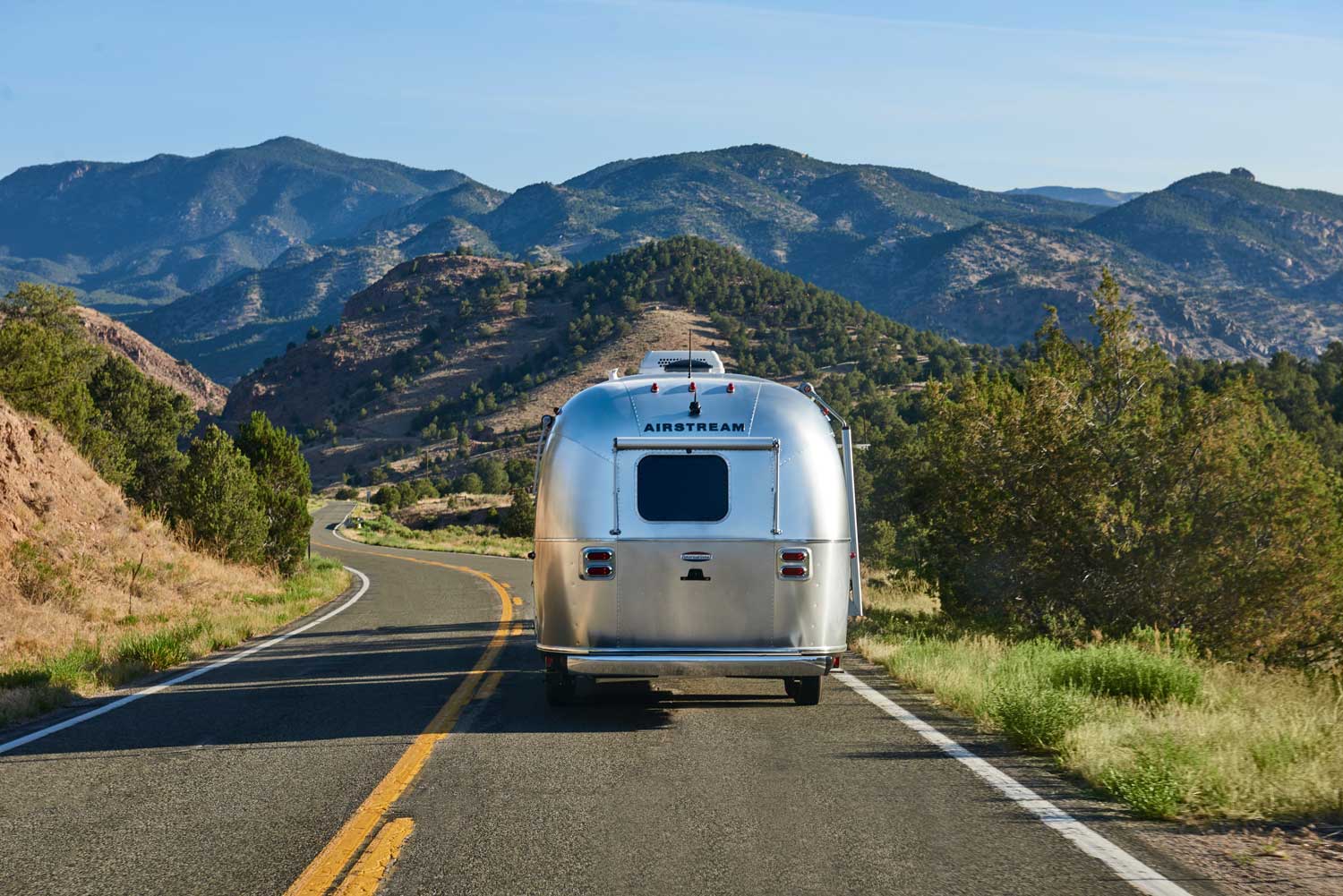
When choosing a size, there are a few things to consider:
- How many people are in your traveling party?
- Will you want room for guests or family that will join you along the road?
- Do you need space for pets?
- How much stuff do you have?
The answers to these questions will impact the size of your RV.
Small RVs: Why They Might Be the Best Choice
There are a few reasons you will want to opt for the smallest space you can comfortably live in. Here are a few advantages of a smaller RV.
CAMPSITES. Do you want to stay in state or national parks and get to more out-of-the-way places? The bigger you go, the harder that will be. But, if your dream is camping at RV resorts or boondocking in large spaces in Arizona, you’ll be fine with a 35+ foot rig.
MORE EXPENSIVE. A bigger rig usually means a bigger budget. You’ll need more fuel to run it and more money in the initial sale price and toward maintenance.
SIMPLIFICATION. The bigger you go, the more time and energy your RV will require to move. Driving a 24-foot motorhome down the highway is mentally easier than pulling a trailer over 30 feet. Maintaining and operating a big motorhome requires more time and tending to more complex systems. The more space and stuff you have, the more it will impact the convenience of everything you do.
RV Weight
Most RVs are built pretty close to their GVWR (Gross Vehicle Weight Rating). Meaning just because you have all that space doesn’t mean you can fill it. Research the GVWR and the UVW (the Unloaded Vehicle Weight or dry weight). Keep in mind the weight of water, grey and black tanks.
Also, think about the weight of any upgrades you will add to the RV. For example, battery banks necessary for solar setups can add hundreds of pounds.
RV Layouts
For every make and model of RV, there are also a variety of layouts. With the larger models, the different floor plans and living areas usually vary with length.
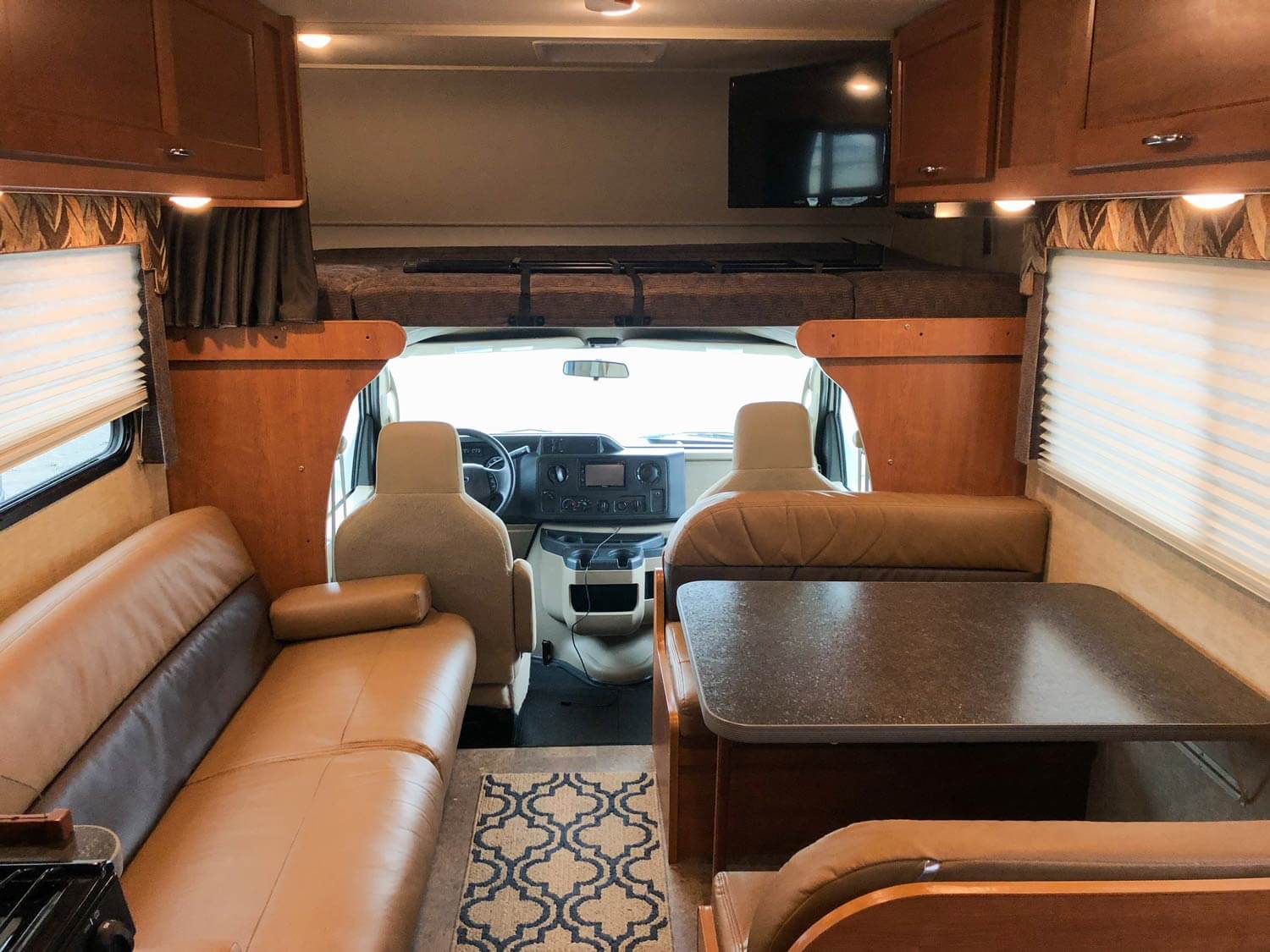
You’ll have RV layout choices to make, such as:
- rear kitchen vs. rear living room
- bunkhouse option (bunk beds in the rear of the trailer)
- wet bath (found in small RVs to save space) vs. dry bath
- walk-around bed vs. a bed against a wall or even a Murphy bed (typically an option in class B RVs)
The more RVs you step inside, the more you’ll figure out how you want to use the living space and your personal preference for your layout. Here are some key things to consider in your RV layout.
PRIVACY. Does everyone traveling have a similar sleep schedule? Or would it be necessary to have some way to close off a bedroom or have a master bedroom? If you’re working from home, you might need a quiet space to take calls and dig into work in the morning (bunkhouse travel trailers can be a great option for converting an area into a home office).
SLEEPING SPACE. This is usually straightforward if you’re a couple, but having kids in tow will affect your layout tremendously. You might want to opt for a bunkhouse layout in a travel trailer if you have little ones. If you have older kids meeting you for a few days on the road, an over-the-cab space in a motorhome or even a tent will be ideal.
SEATING SPACE. Is a dinette sufficient, or do you need a couch as well? If you are looking at a motorhome, you can opt for swivel cab seats to maximize seating. Fifth wheels and class As tend to have the biggest option for a living area and entertainment center if this is a priority.
KITCHEN. What we eat is a big part of our lives. If you like to cook and enjoy making elaborate meals, you don’t want to compromise on your RV Kitchen. When looking at layouts, consider where you’ll put your cookware and ingredients, and how difficult it will be to access them. Would you be comfortable cooking outside on a griddle or over a fire if you choose a smaller space? Is the fridge and freezer space enough, or do you need a place for a 12-volt freezer? The kitchen is generally a crucial layout piece for RVers, so take your time to figure out what works for you.
You might also want to check out 31 Useful RV Kitchen Accessories and How to Organize an RV Kitchen.
PRO TIP: I recommend you go to some dealerships and get into as many different RVs as possible. When you see features you like, take notes, pictures, and even videos. Make a list of features and options that are must-haves versus nice-to-have.
Buying a New vs. Used RV
A big choice new RV owners have to make is whether they’ll buy a new or used RV for full-time living. There are pros and cons to each of these.
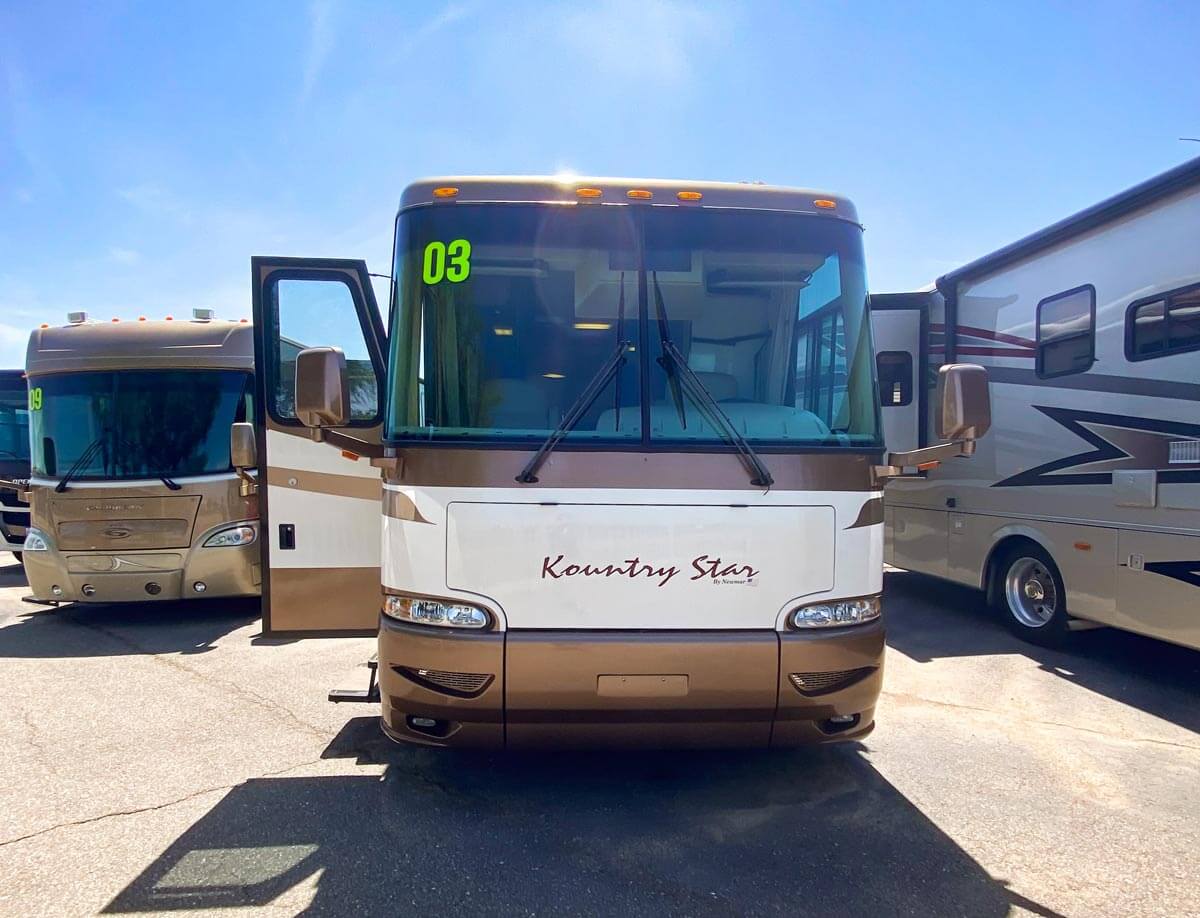
Purchasing a New RV
When you buy a new RV, you’ll have the benefit of a warranty and the assurance that any issues will be addressed. However, make sure you buy your new RV from a reputable dealer and do your own research (don’t take the salesman’s word on everything, find out for yourself). Also, be aware that even a new RV can be tied up in the shop for months if it has issues right off the lot.
Purchasing a Used RV
Full-time RVers can save a lot of money by purchasing a used RV. However, buying a used RV has its drawbacks.
First, you won’t have a warranty. Even if the warranty is still in good standing, it’s only applicable to the original owner. Second, you’ll have to be diligent in checking the RV over for any problems, especially if you’re buying directly from the owner and not through a dealership. Many buyers will use an RV inspector to get some peace of mind, especially if they’re buying a used motorhome where an engine and other auto systems are required.
A pro to purchasing a used RV around 3 – 5 years old is most of the issues have been worked out.
When considering new vs. used, make sure you choose the best option for you and your situation.
RV Optional Features
The RV market is full of optional features that you may want to consider for your full-time RV life.
In this section, we’re concentrating on features that require specialty work or are difficult to upgrade aftermarket. That’s why you won’t find RV mattress upgrades, keyless entry door locks, or cell boosters on this list. Below are a few considerations:
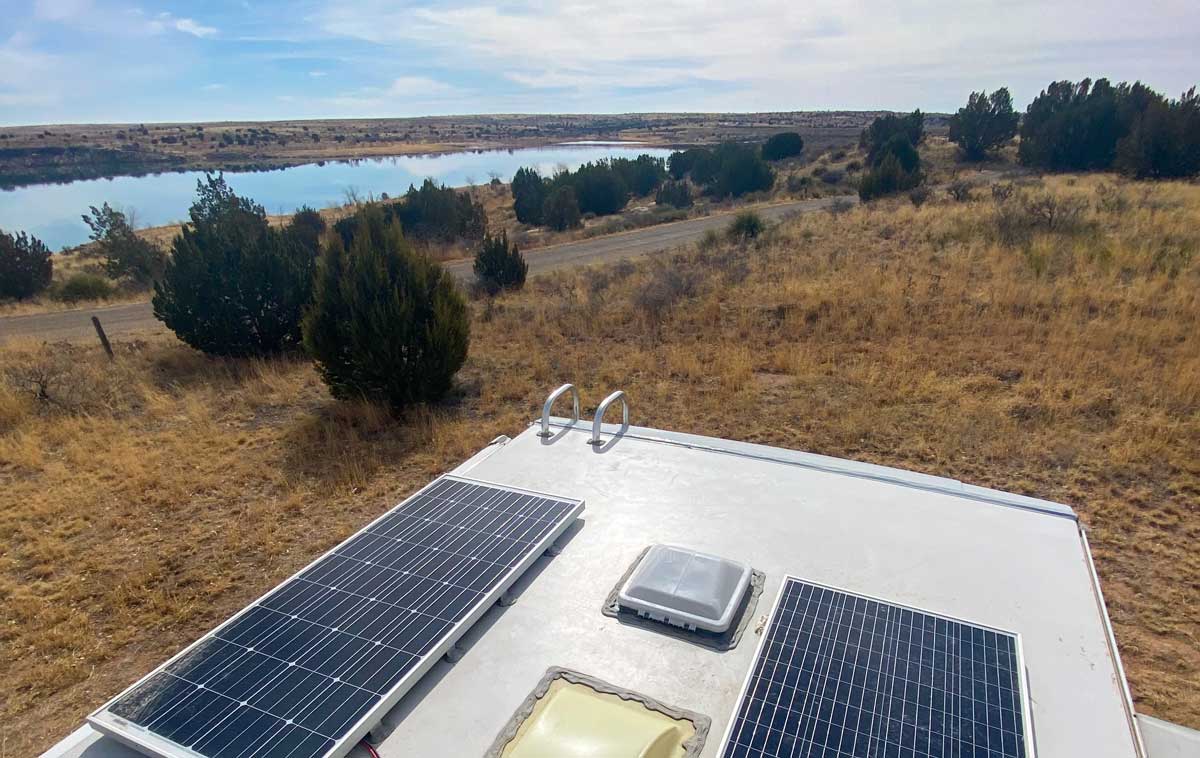
SOLAR SETUP. With lithium batteries and solar technology becoming more affordable, a small solar setup is becoming an increasingly popular optional feature with RV brands. If you aren’t very technical but want the option for solar power, you can find RV brands with the option of an upgraded battery bank, inverter, and solar panel setup. You can also purchase a new RV that is prewired for adding solar.
REFRIDGERATOR. This is technically a layout feature, but whether RVs come with either a small RV fridge or a residential refrigerator is worth noting. Residential refrigerators are typically found in large class As or fifth wheels. They are spacious and don’t require regular defrosting like RV fridges. However, they do require electric power, unlike the smaller 2-way absorption RV fridges that can cool through propane or 120V AC electricity. This is important to keep in mind if you want to run the fridge when not connected to shore power (plugged into the power grid).
4-SEASON PACKAGE. If you plan on traveling in cold weather, a four-season package on your RV is a must. These upgrades include sealing the undercarriage of the RV for insulation, running the ducted heat near the insulated holding tanks to prevent freezing, using higher-quality building materials, custom vent covers, double-paned windows, and more. These are all options that are difficult to upgrade later and can allow you to camp in temperatures as low as 0 degrees Fahrenheit.
RV Campsite Setup
If you plan to move your RV often, some features will impact camp setup and breakdown time more than others. These will ultimately influence how easy it is for you to pick up and go.
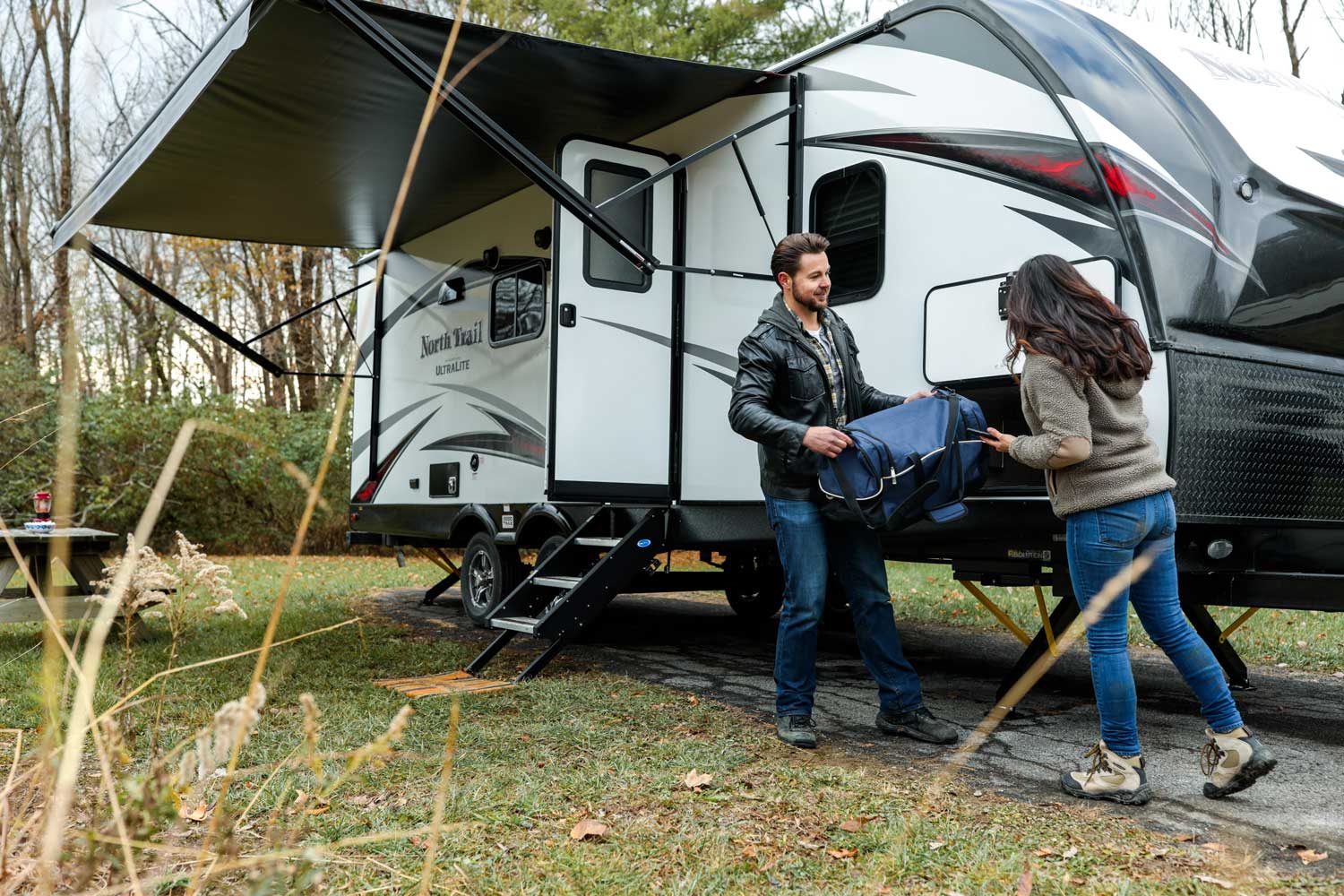
Slides
Slides or slide-outs can add significantly more space to your RV, which is why RVers love them. However, they also take a little time and space to set up. You’ll need to be aware of where your slides are when pulling into the campsite. If you set up your RV and then realize the slide is next to a tree or pedestal, you’ll be forced to move to extend the slide.
If you plan to take advantage of free overnight stays at businesses such as Walmart, Cracker Barrel, or truck stops, ensure you don’t need the slides extended to sleep, get to storage space, or operate the kitchen.
Lastly, consider that slides can be prone to issues in a lot of RV models. Even with regular maintenance, a slide-out might break and will most likely require an RV shop to fix. Major issues like this can become a real nightmare for full-time RVers without a sticks-and-bricks home as a backup while their RV is in the shop.
Leveling and Stabilizing Systems
Getting your trailer set up at a campsite is a process. You’ll need to detach the trailer from the tow vehicle and stabilize and level your trailer. Features such as automatic stabilizing jacks can make setup easier when compared with manual options.
Automatic hydraulic leveling jacks on a motorhome will make setting up on uneven campsites and parking lots a breeze. Otherwise, you’ll use leveling blocks to raise your wheels until the coach is level.
READ NEXT: Our guide and checklist to set up a travel trailer.
Boondocking and Off-Grid RV Living
Something to consider when you are RV shopping is how much you want to boondock.
Boondocking is using your RV without hookups. There is no connection to electricity, water, or a dump station. Boondocking is often referred to as ‘dispersed camping’ or ‘wild camping’ since it takes place outside of an RV park, typically on public lands. Boondocking is a form of dry camping.
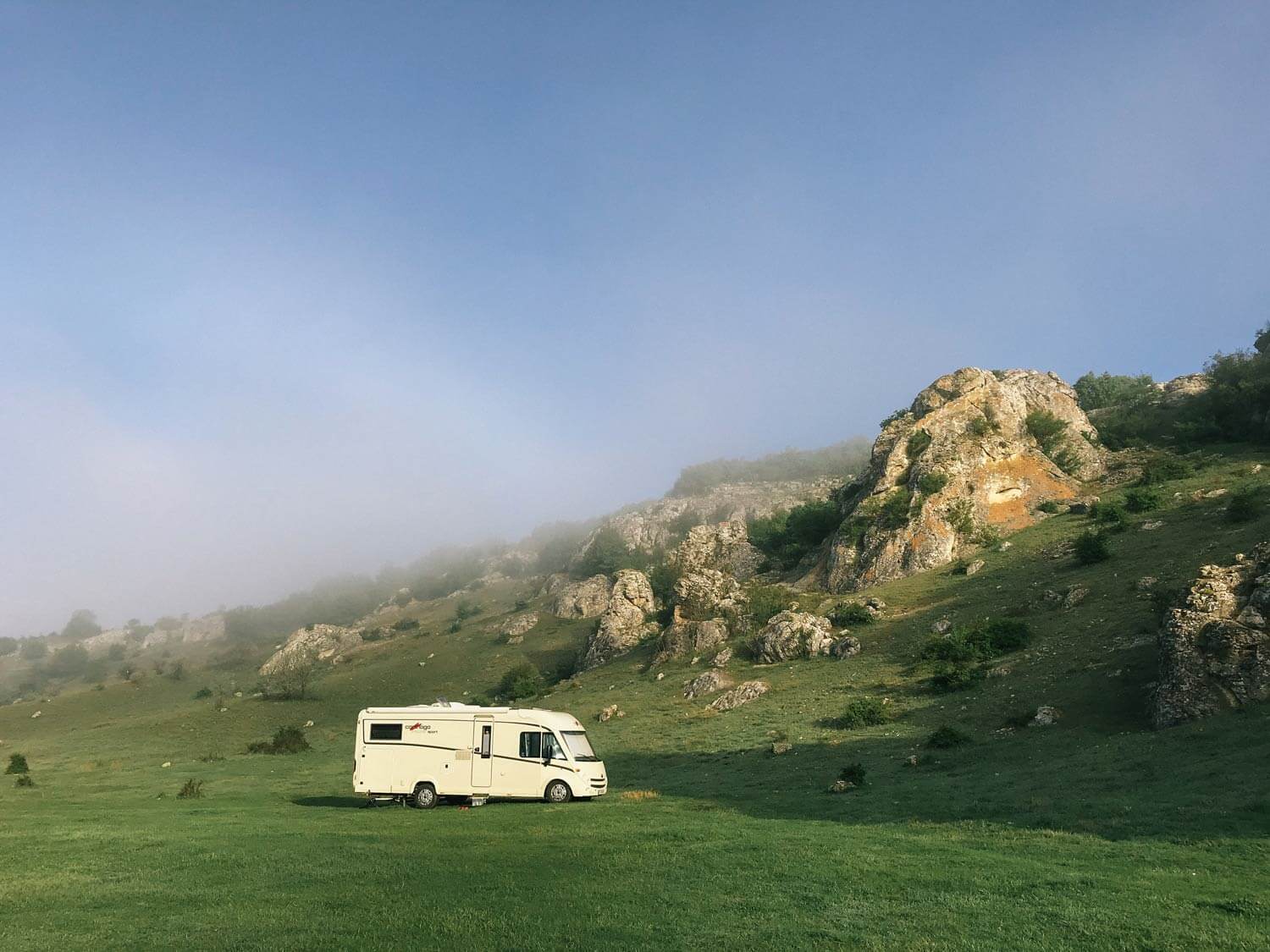
If camping out in remote locations is your RV dream, you’ll want to consider the rig and options you’ll need to manage your resources.
- How big are the water tanks? Pay close attention to the tank sizes in your RV (fresh water, grey water, and black water). If you want to stay off-grid, you’ll need larger tanks or a way to use them sparingly.
- Is there space for additional installs? Check there is room to install additional batteries, an inverter, and solar panels. Is the RV wired for solar already? Avoiding a DIY project drilling into the RV roof is a plus.
- How big is the propane tank? If you are camping in colder climates, the heater can eat through propane pretty quickly. If you purchase a motorhome with non-removal propane tanks, a fill station can be harder to find.
These features are all about how remote you want to be when camping and how often you want to move your rig. Also, consider how conservative you’ll be with resources and how much you’re willing to be inconvenienced.
PRO TIP: Even if you plan to stay at state parks, be aware that many state and national parks don’t have full hookups. Sometimes you’ll just have water. Other times, no hookups. Unless you stay at RV resorts, you likely won’t have a dump station at your campsite. Or you’ll be paying extra for those spots.
READ NEXT: Get started with off-grid RVing with our 10 must-know tips for boondocking.
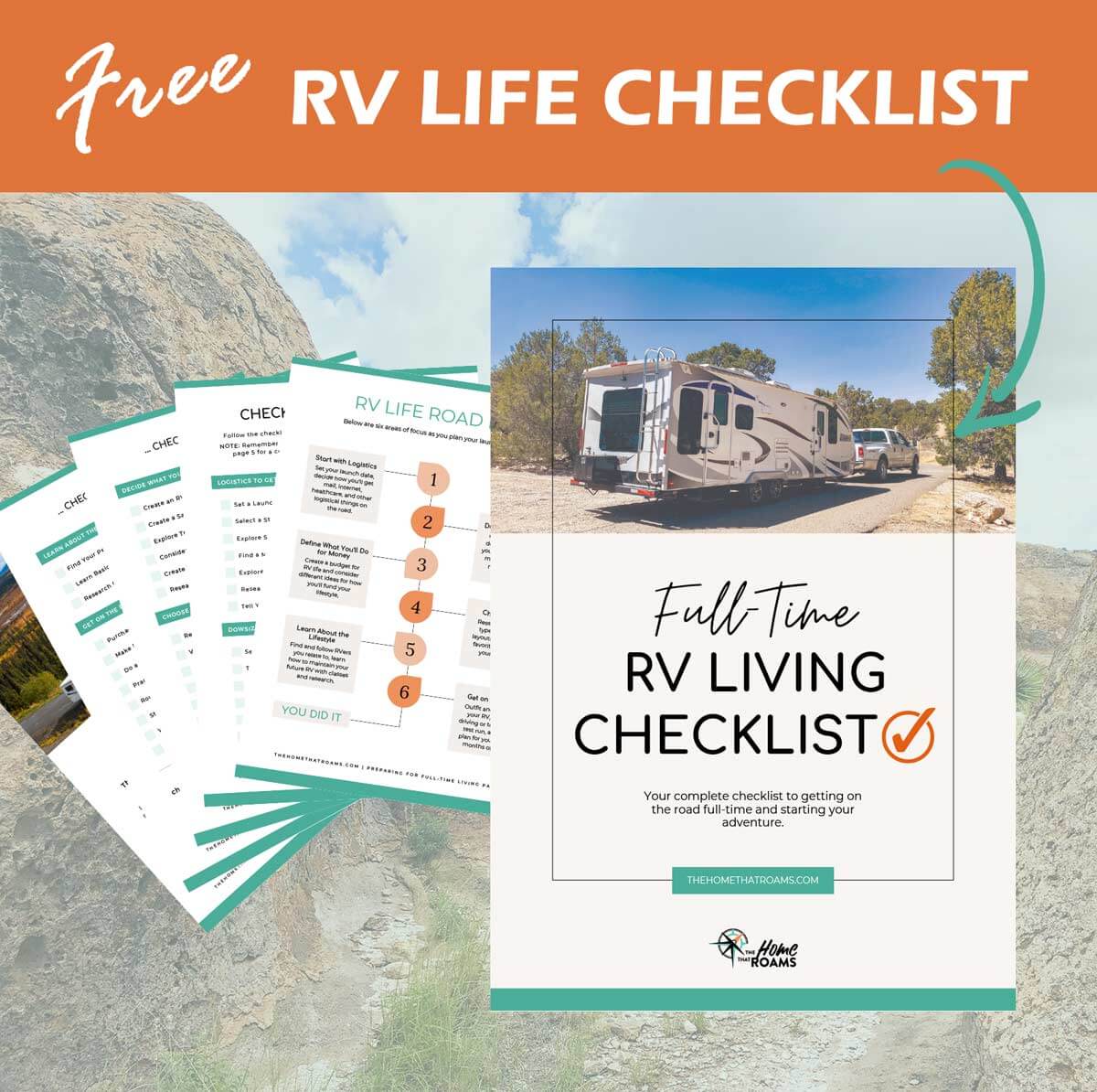
Your Guide to Launching RV Life
Road Map & Checklist – Start Now!
Unsubscribe at any time. View our privacy policy.
What’s the Best RV for Full-Time Living?
The perfect RV is different for everyone. There are many things you won’t know you need in an RV until a year down the road.
For your first full-time RV, aim for something with fewer features and not too much work to get it going.
Start your RV journey with something basic. You’ll get on the road sooner and begin to hone in on what options matter most to you.
Choose your type and layout based on your priorities, and go as small as you’re comfortably able.
Once you get out there and start traveling, you’ll learn what features are important to you. You’ll also realize what you are willing to compromise on (queen vs. king bed) and what you aren’t (a generator).
The more experience you gain, the more you’ll be ready for that next RV purchase.
READ NEXT: You might also want to check out our article on motorhomes vs travel trailers.
Want more beginner tips on RVing and how to get started?
Check out our RV gear lists, info on how to prepare for RV living, pros and cons of the lifestyle, and more in our guide.
Like this post? Save it on Pinterest for later.
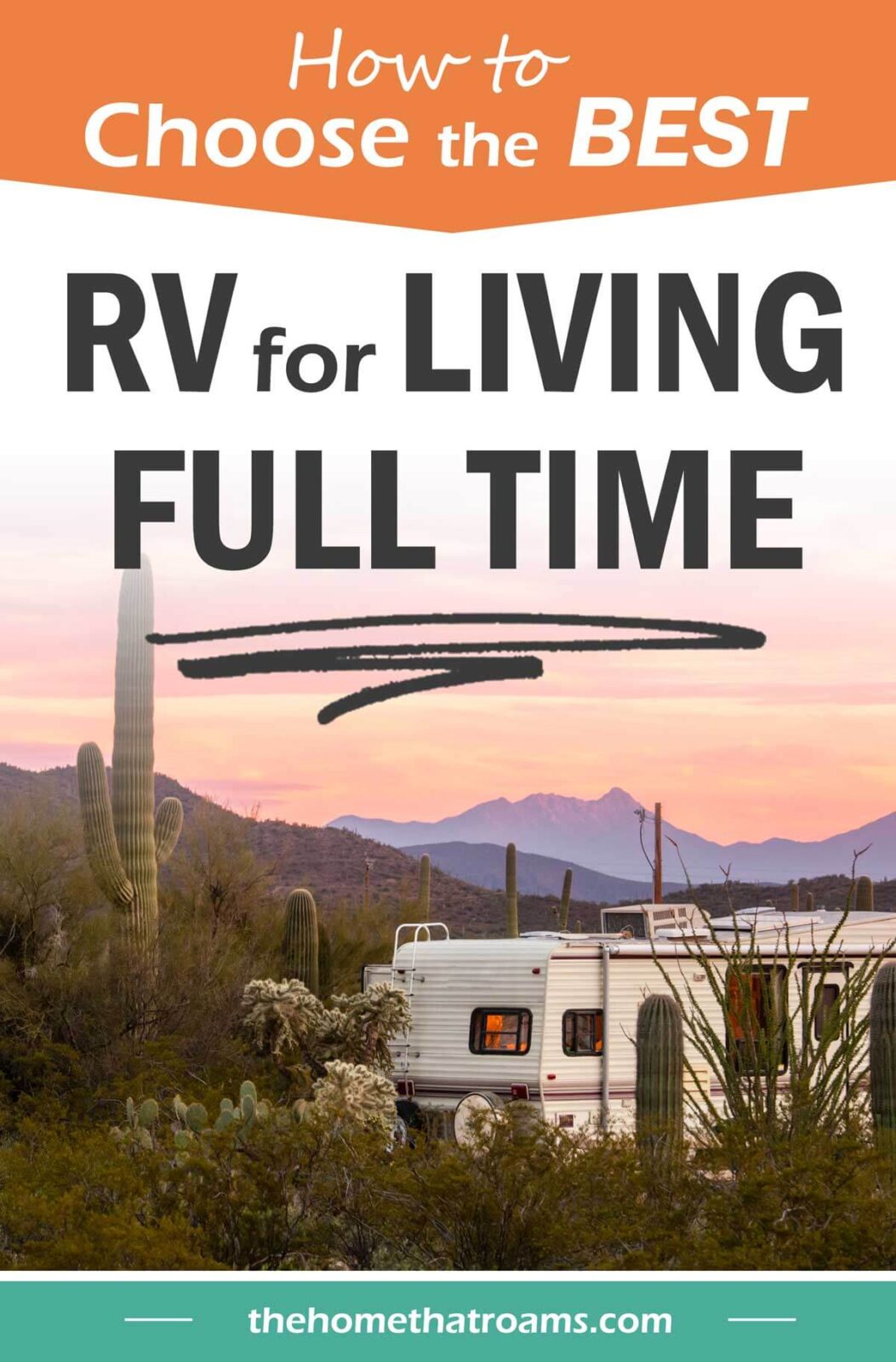
Or view our web stories.

